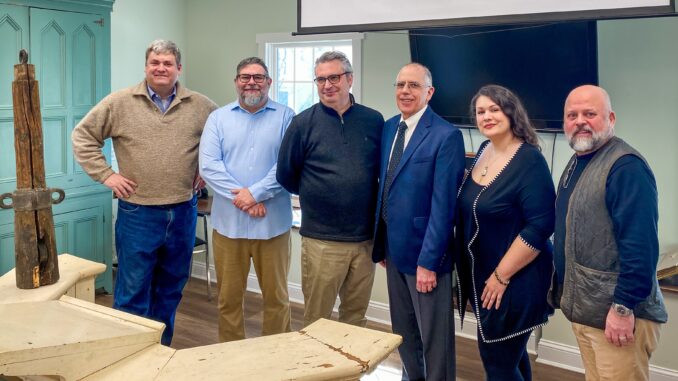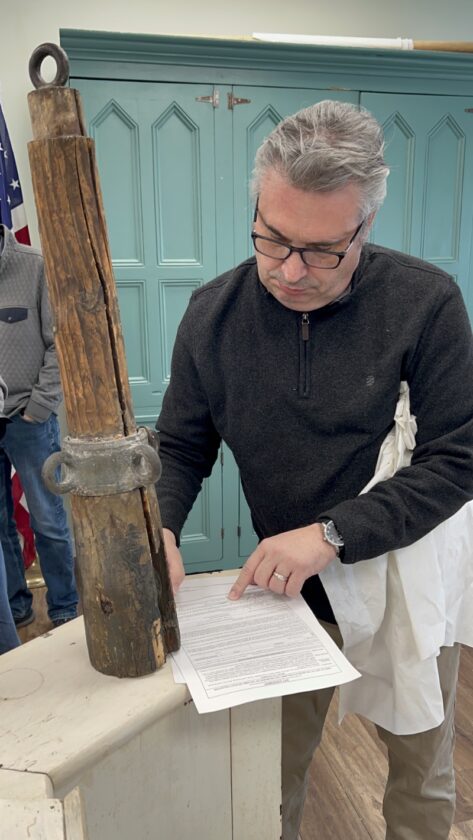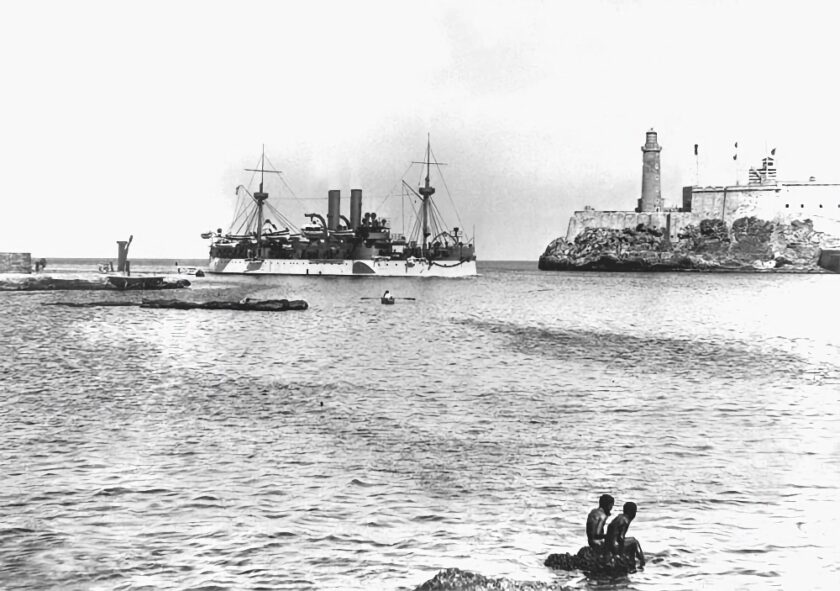
PARK RIDGE
“Remember the Maine!” That was the patriotic battle cry that accompanied the United States’ entry into the Spanish-American War in 1898. A U.S. Navy battleship called the Maine had been sunk by a massive explosion in Havana Harbor on Feb. 15. The ship had been sent to the Caribbean to protect U.S. interests during a time of local insurrection, as Cuba, then a colony of Spain, grappled for independence.
The great majority of the Maine’s crew, 266 men, were killed as a result of the explosion. The source of the blast—an internal accident or a Spanish underwater mine—has been debated by historians in the years since.
However, in 1898 an incensed American public placed the blame squarely on Spain. The U.S. declared war on April 19, 1898. The short-lived conflict lasted under four months.
By the end of it, Spanish colonial rule in the Americas was over and the U.S. had acquired new territories in the Western Pacific and Latin America including Puerto Rico, the Philippines, and Guam.
Fast-forward 125 years: A wood and metal relic sits in the Pascack Historical Society’s museum in Park Ridge, 2,000 miles from Havana Harbor. As the story goes, it was a piece of the Maine’s mast, sawed off the wreck by a scuba diver, and it later found its way to Oradell where it was sold at a garage sale.
The buyer, whose name has been lost to time, brought it to the museum. There it remained for years as historical society volunteers puzzled over the object and debated its authenticity.
In 2021, Christopher Kersting of Park Ridge, a retired educator, entered the picture. These days he serves as the museum’s second vice president and keeps track of artifact accessioning and the member rolls. He is also the grandson of a Spanish-American War veteran, Arthur Kersting, who served with 8th Massachusetts Volunteer Infantry Regiment.
“My father, himself a World War II veteran, shared my grandfather’s stories of the heat and humidity, the heavy uniforms, and unsavory food rations. As I looked across the room at the mysterious artifact, I wondered if this small piece of wood could actually be from that tragic ship, the same vessel whose demise led our nation into war and affected my grandfather’s life so profoundly,” says Kersting. “I was determined to find out once and for all if the piece of a ship’s mast in the collection of the Pascack Historical Society was truly a relic of the USS Maine.”
His quest brought him in contact with some of America’s top brass on matters of militaria: Roderick Ganier, chief curator at Arlington National Cemetery, and retired U.S. Navy Capt. Steve Whitaker, a historian/archaeologist who is considered one of the nation’s foremost experts on the USS Maine. In examining the smallest details of the artifact, down to its trace flecks of paint, and comparing these with the historical timeline of the ship, these experts determined that the museum’s relic was indeed a missing piece from the side spar of the main mast of the Maine.

In light of this revelation, the trustees of the Pascack Historical Society determined that the correct course of action would be to donate the spar, in perpetuity, to Arlington National Cemetery. Arlington is home to the USS Maine Mast Memorial, honoring those Americans who died in the event on Feb. 15, 1898. There it will be restored, preserved, and used as a teaching tool for the four million people who visit the site annually.
“Our mission at the museum is to acquire and preserve the artifacts that tell the story of our Pascack Valley,” says PHS President Kristin Beuscher. “Items like our wampum drilling machine from Park Ridge, the Tice family quilt from Woodcliff Lake, a 1776 grandfather clock from Hillsdale, and our latest acquisition, a 19th century church pulpit from Montvale—these are our local treasures. Once we received word that the experts believed this was a spar off the USS Maine, as much as we would have loved to keep this relic, we knew it did not belong with us. This was an item of national significance that needed to be at Arlington.”

On the morning of March 7, Ganier and Whitaker visited the museum, along with Arlington National Cemetery’s command historian, Steven Carney, to accept the gift. Also on hand to witness the handover was Park Ridge Mayor Keith Misciagna. Whitaker graciously answered questions about the artifact and spoke about the process of authenticating the spar. Park Ridge’s local cable station PKRG was on hand to capture the event and the footage will be aired on that station (Optimum Ch. 77 and Verizon Ch. 22) and on YouTube in the coming days.
The visiting USS Maine experts also enjoyed a tour of the Pascack Historical Society’s museum, and PHS volunteers relished the opportunity to share their own brand of historical knowledge with Whitaker and the delegation from Arlington.
The Pascack Historical Society is an all-volunteer organization serving the towns of Emerson, Hillsdale, Montvale, Park Ridge, River Vale, Township of Washington, Westwood, and Woodcliff Lake. This nonprofit 501(c)3 organization runs a free-admission museum at 19 Ridge Ave. in Park Ridge.
Housed in an 1873 former chapel, the museum tells the story of the Pascack Valley region through thousands of artifacts spanning centuries of local history.
For more information, visit pascackhistoricalsociety.org.
— Kristin Beuscher is president of Pascack Historical Society
